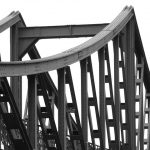What Is Structural Steel Used For?
When it comes to heavy-duty construction, steel has long remained a valuable asset to architectural firms and construction companies. Thanks to the strength to weight ratio, steel makes it possible to build stronger, taller, and safer buildings than other building materials allow. Not all steel is created equal, though. There are varying construction types depending on the job at hand. One of the most commonly used forms of steel is known as structural steel. Structural steel comes in various sizes and shapes, making it a versatile building material. Suppose you’re considering the construction of a new building. In that case, especially if it is to be an industrial or commercial building, it is important to fully grasp what is structural steel used for and how it might be applied to your given project.
Structural Steel Shapes
One of the main benefits of structural steel is its ability to be shaped into varying designs. The most common shape is the I-beam. I-beams look as the name suggests (if you were to look at one end of the beam, it would look like a capital I). This kind of beam is easily produced and is used in the construction of everything from homes to high-rises. The I-beam is also one of the most regulated. Whether you are located in the United States, Europe, the UK, or other regions of the world, the beam will be regulated to ensure a high-quality standard.
Other common structural steel shapes include an Angle (also known as an L, as it looks like a capital “L”0. There is a C-Beam, known as a structural channel, a Tee (capital “T” shape), a Z-Shape, an HSS-shape (short for ‘hollow structural section,’ which is part beam part pipe due to its hollow nature), plus several other designs like a plate, rod, bar, or open steel joist.
For most projects, though, you will use the I-beam, C-beam, or an Angle L-shape beam.
Different Steel Variations
There is no shortage of standard structural steel, especially within the United States. This comes down to the metal make-up and the kinds of alloys used within the build of the steel. Carbon steel, for example, is one of the variations to consider when it comes to structural steel (and, as is the case with the other alloys, there are several sub-variations of carbon steel).
There are high strength low alloy steels as well as corrosion-resistant high strength low alloy steels. Corrosion resistance is an excellent option either if the metal will be used on the exterior of a building or if it will be exposed to changing elements, including moisture and humidity within a facility.
Other kinds of steel include corrosion-resistant high strength low alloy, forged steel, and quenched and tempered alloy.
Some of the Build Benefits of Structural Steel
There are several benefits you can expect to take advantage of when building with structural steel instead of another building material, such as concrete.
Structural steel is less prone to mold development. While it is still possible for mold spores to form, concrete, wood, and other traditional building materials can easily house the mold, making it possible to spread the mold throughout the building. The same is true with corrosion. While exposure to water and oxygen can eventually turn to rust, as long as the structural steel is taken care of, this can be avoided. Certain pains or protective coatings can be applied directly to the steel, which will make it more difficult for any corrosion to begin.
The structural steel used during construction is extremely strong and durable. It is also stiff, which means it won’t shift as easily as wood, concrete, brick, or other building material. It’s easy to manufacture and can withstand a considerable amount of wear and tear both during installation and after construction has finished. Most other build materials can not say the same.
Another benefit of structured steel is it is fire resistant. Steel is already noncombustible. A fire must reach extreme temperatures to begin melting steel. Of course, during the building process, you will likely be required to have the steel coated (or protected) with fire-retardant material. This provides additional steel security against the possibility of fire.
Uses Of Structural Steel For Your Construction
With the combination of strength and durability, it is hard to bypass the benefits of structural steel. These are not benefits you’re going to see from other building materials. Even if you need to combine the steel with some other construction materials, you will have a strong, well-constructed building that can handle heavier floor loads while giving you assembly options for construction. You are not tied down to one kind of structural steel. Whether you want a lighter steel with corrosive protection or something heavier and more rigid, there are options available to you. Add in the ability to select varying shapes of structural steel, and you instantly expand your construction options, all with the thanks of the structural steel material.
If you’re currently designing a new building, or you want to know how you can safely upgrade your current construction to the best of its potential, now is the time to learn about how structural steel can work for your current place of business.
Discover The Structural Steel Difference
Structural steel is one of the most used, versatile building materials available. With its combination of strength and weight, it opens the doors to new designs and building opportunities. At C-BEAMS we provide innovative structural solutions for your building needs. As a construction fabricator and manufacturer, we can work with you to provide the exact kind of structural steel designs you need. So, if you want to discover how structural steel can work with your project, our team here at C-BEAMS will go over your construction requirements to ensure you receive an exceptional quality made specifically for your design needs.






